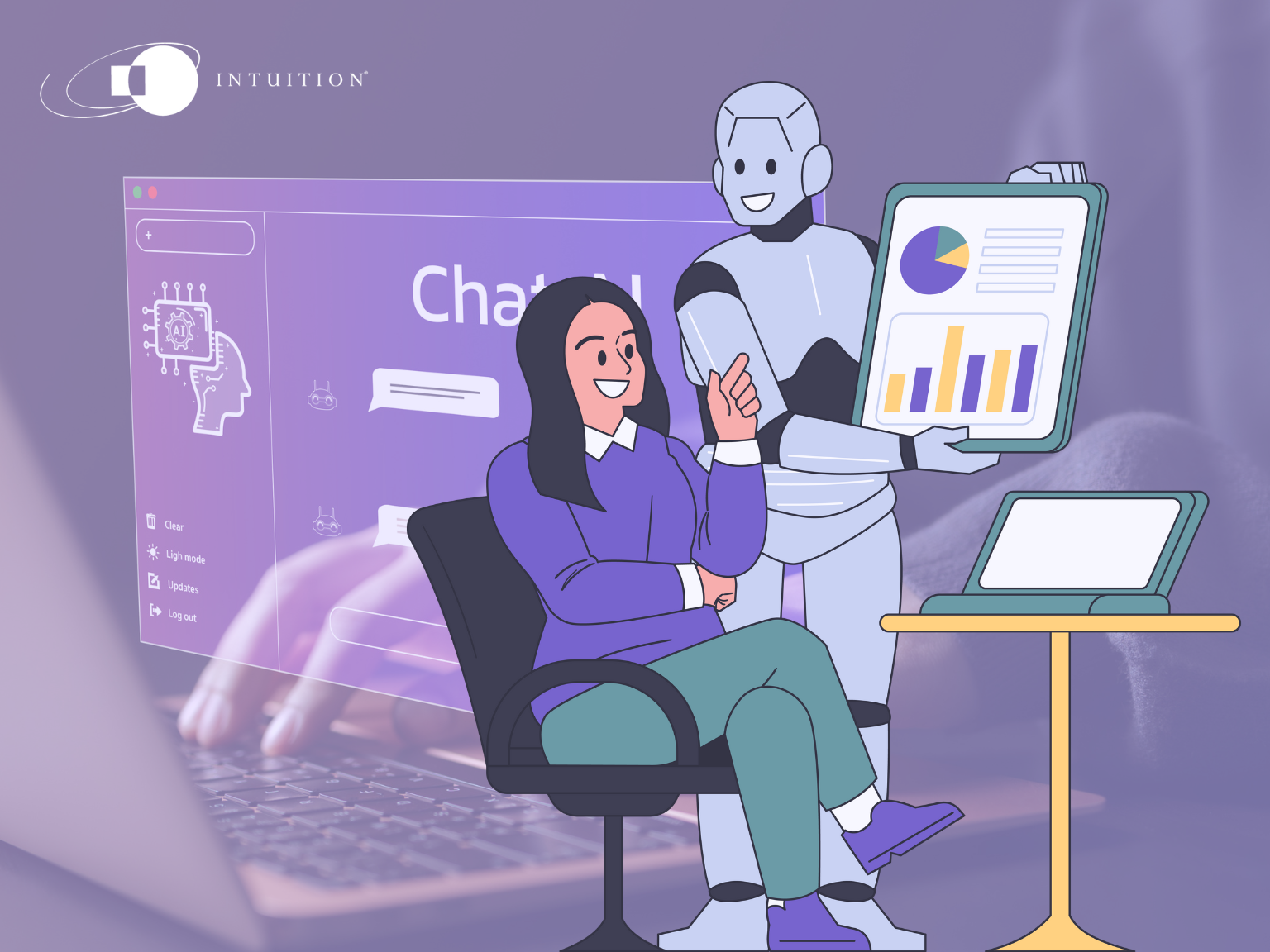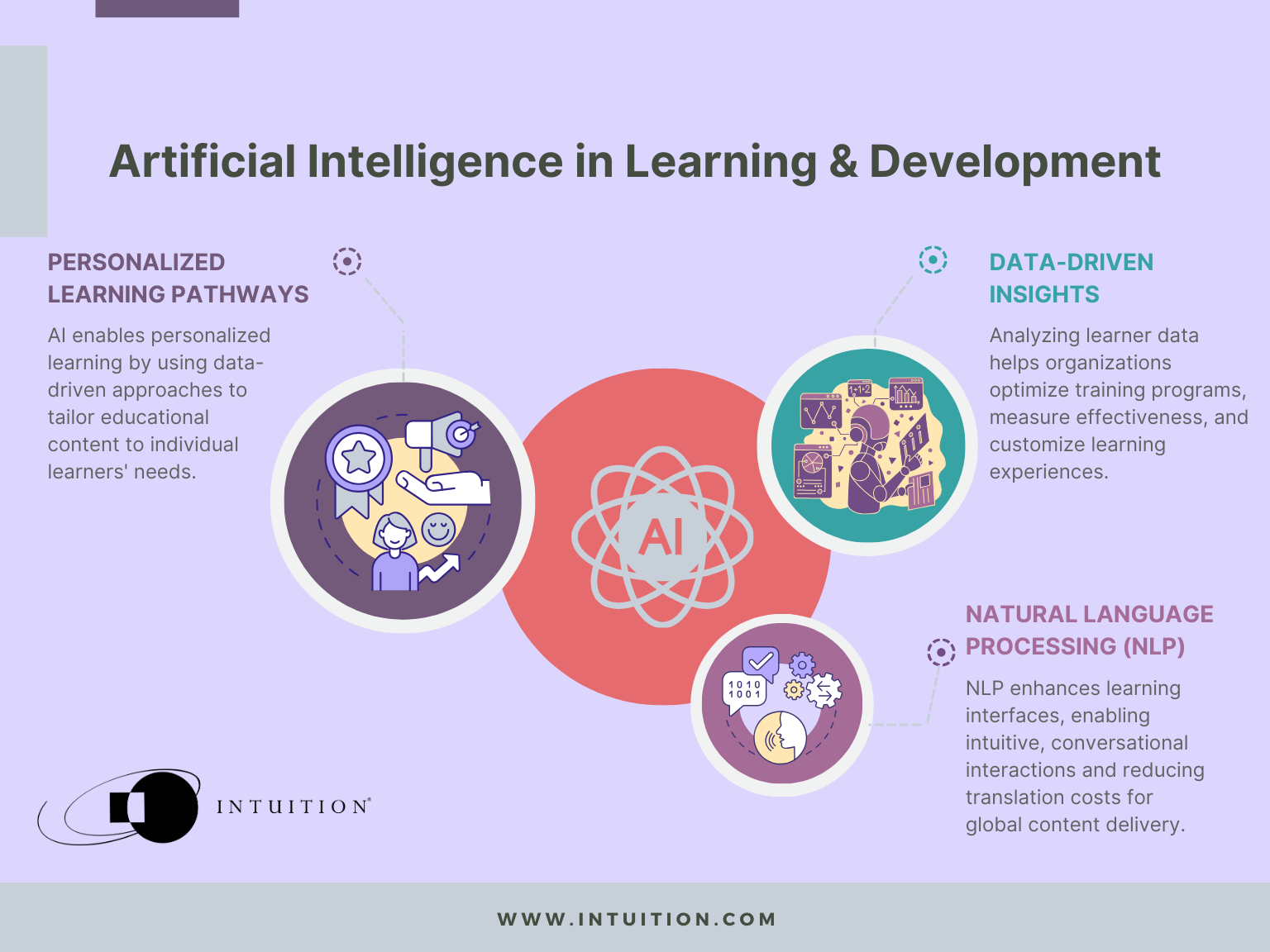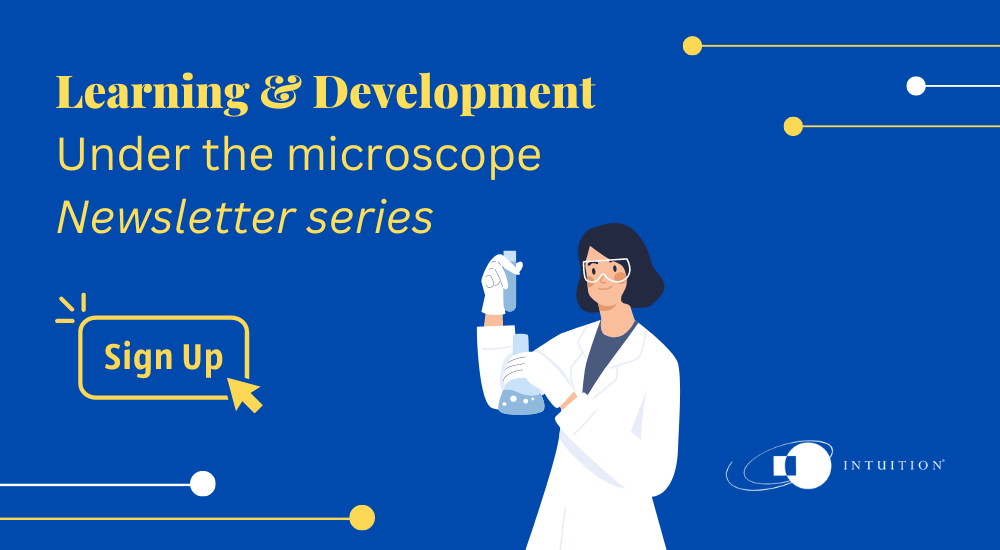How Generative AI is changing L&D
The rapid and seemingly unstoppable progress of Artificial Intelligence (AI) has rarely been out of the news, with the rise of generative AI chat bots such as ChatGPT and Google’s Gemini (formerly Bard) set to change fundamentally how businesses and their consumers interact with technology. From asking basic questions to writing code, these technologies have impacted how every business is thinking about AI and its place in the organization. The question is, how is Generative AI impacting learning and development? This article sets out to highlight and explore how AI has changed the learning and development world in recent times.

Personalized learning pathways
When teams have deadlines, luxuries such as personalized learning can often feel like a pipe dream, especially for those organizations who must scale training to thousands of employees. AI has made it possible for teams of all sizes to make sure every learner is catered for. By using a data-driven approach, recommendation systems can be implemented by gathering data on learner attributes such as learning pace, platform preference, and style. By doing so, learning platforms can then cater for every employee individually, giving the user a personalized approach to learning, making it more engaging and ultimately more impactful.
Data-driven insights
Data-driven insights play a pivotal role in these modern learning and development strategies. By analyzing learner data, such as engagement metrics, assessment results, and performance indicators, organizations can gain valuable insights into the effectiveness of their training programs. These insights enable L&D professionals to identify trends, measure learning outcomes, and pinpoint areas for improvement. Additionally, data-driven approaches allow for the customization of learning experiences, as organizations can tailor content and delivery methods to meet individual learner needs. Overall, leveraging data-driven insights empowers organizations to optimize their L&D efforts, leading to enhanced learning outcomes and organizational performance.
[How GenAI could accelerate employee learning and development]
Natural Language Processing (NLP)
NLP enables the development of interactive learning interfaces that understand and respond to natural language queries. Learners can engage in conversations with these interfaces, asking questions, seeking clarification, and receiving instant feedback. This conversational approach makes learning more intuitive and engaging, resembling real-life interactions. From a development perspective, NLPs can change the translation aspect of learning and development going forward. By being able to process both written and verbal language, NLP removes translation costs from a budget, giving the user a pain-free experience when operating the content across the globe.

Concerns must be considered
While AI presents huge advantages to teams looking to streamline their training initiatives, the implementation of this kind of technology does not come without its challenges. AI learning systems take advantage of employees’ performance metrics and personal characteristics to help create the best results for L&D teams, but with this comes a responsibility for the correct and ethical handling of data. In handling this kind of data, organizations must adhere to such well-known regulation as General Data Protection Regulation (GDPR), ensuring compliance being an important step when processing this level of user information.
Present AI technologies are susceptible to errors or inaccurate results, which could lead to training programs that are irrelevant or misleading, ultimately hindering the learning process instead of improving it. Consistent monitoring and validation of AI outputs can assist in avoiding these data errors, helping to create the best and most accurate data points for both the L&D team and the learner themselves.


